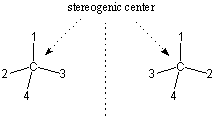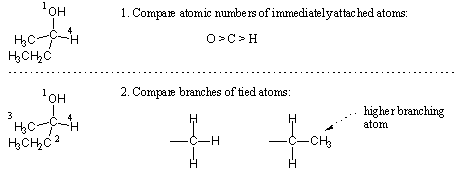Please wait while we process your payment
If you don't see it, please check your spam folder. Sometimes it can end up there.
If you don't see it, please check your spam folder. Sometimes it can end up there.
Please wait while we process your payment
Get instant, ad-free access to our grade-boosting study tools with a 7-day free trial!
Learn more



This site is protected by reCAPTCHA and the Google Privacy Policy and Terms of Service apply.
Create Account
Select Plan
Payment Info
Start 7-Day Free Trial!

Annual
2-49 accounts
$22.49/year + tax
50-99 accounts
$20.99/year + tax
Select Quantity
Price per seat
$29.99 $--.--
Subtotal
$-.--
Want 100 or more? Request a customized plan
You could save over 50%
by choosing an Annual Plan!

SAVE OVER 50%
compared to the monthly price!
| Focused-studying | ||
| PLUS Study Tools | ||
| AP® Test Prep PLUS | ||
| My PLUS Activity | ||
$22.49/month + tax
Save 25%
on 2-49 accounts
$20.99/month + tax
Save 30%
on 50-99 accounts
| Focused-studying | ||
| PLUS Study Tools | ||
| AP® Test Prep PLUS | ||
| My PLUS Activity | ||
No Fear provides access to Shakespeare for students who normally couldn’t (or wouldn’t) read his plays. It’s also a very useful tool when trying to explain Shakespeare’s wordplay!
Erika M.
I tutor high school students in a variety of subjects. Having access to the literature translations helps me to stay informed about the various assignments. Your summaries and translations are invaluable.
Kathy B.
Teaching Shakespeare to today's generation can be challenging. No Fear helps a ton with understanding the crux of the text.
Kay H.
No Fear provides access to Shakespeare for students who normally couldn’t (or wouldn’t) read his plays. It’s also a very useful tool when trying to explain Shakespeare’s wordplay!
Erika M.
I tutor high school students in a variety of subjects. Having access to the literature translations helps me to stay informed about the various assignments. Your summaries and translations are invaluable.
Kathy B.
Teaching Shakespeare to today's generation can be challenging. No Fear helps a ton with understanding the crux of the text.
Kay H.
Create Account
Select Plan
Payment Info
Start 7-Day Free Trial!
You will only be charged after the completion of the 7-day free trial.
If you cancel your account before the free trial is over, you will not be charged.
You will only be charged after the completion of the 7-day free trial. If you cancel your account before the free trial is over, you will not be charged.
Order Summary
Annual
7-day Free Trial
SparkNotes PLUS
$29.99 / year
Annual
Quantity
51
PLUS Group Discount
$29.99 $29.99 / seat
Tax
$0.00
SPARK25
-$1.25
25% Off
Total billed on Nov 7, 2024 after 7-day free trail
$29.99
Total billed
$0.00
Due Today
$0.00
Promo code
This is not a valid promo code
Card Details
By placing your order you agree to our terms of service and privacy policy.
By saving your payment information you allow SparkNotes to charge you for future payments in accordance with their terms.
Powered by stripe
Legal
Google pay.......



Please wait while we process your payment

Sorry, you must enter a valid email address
By entering an email, you agree to our privacy policy.
Please wait while we process your payment

Sorry, you must enter a valid email address
By entering an email, you agree to our privacy policy.
Please wait while we process your payment

Your PLUS subscription has expired
Please wait while we process your payment
Please wait while we process your payment

Enantiomers
What makes a molecule chiral? It turns out that in the majority of cases chiral molecules result from carbon atoms that are bonded to four different groups. For example, C2 in 2-butanol is attached to the four distinct groups -H, -Me, -Et, and -OH. There are two different ways to arrange four groups about tetrahedr al carbon, giving rise to chirality. (In fact, chiral molecules gave chemists evidence that carbon is indeed tetrahedral.) Such a carbon atom is called an asymmetric carbon because it lacks a plane of symmetry. Asymmetric carbons are also called "chiral carbons". Because asymmetric carbons give rise to stereoisomerism, they are stereogenic centers or stereocenters. Technica lly, there are other structural motifs that are stereocenters beside asymmetric carbons, but in practice the term "stereocenter" is used in place of "asymmetric carbon" to denote a carbon bonded to four different substituents.

The goal of nomenclature is to allow chemists to unambiguously identify the structure of any molecule given its name. The presence of stereoisomers presents a special problem in this regard. For example, given a particular molecule of 2-butanol, how can we name it so that the name conveys its handedness? How can we convey exactly which enantiomer of 2-butanol we're talking about? Furthermore, what about molecules that contain several stereocenters? What is needed is a nomenclature system to designate the absolute configuration at each stereocenter.
The term "configuration" refers to the fixed spatial positioning of bonds at a particular stereogenic carbon atom. Do not confuse "configuration" with "conformation". Unlike conformations, which are constantly equilibrating back and forth between forms, configurations are fixed and do not change unless bonds are broken. The configurational designation is absolute in the sense that the exact three-dimensional structure of the molecule can be reconstructed using the name alone.
In order to specify the absolute configuration at any stereogenic carbon, first identify the four groups attached to it and assign priorities to them using the Cahn-Ingold-Prelog convention:


Please wait while we process your payment





